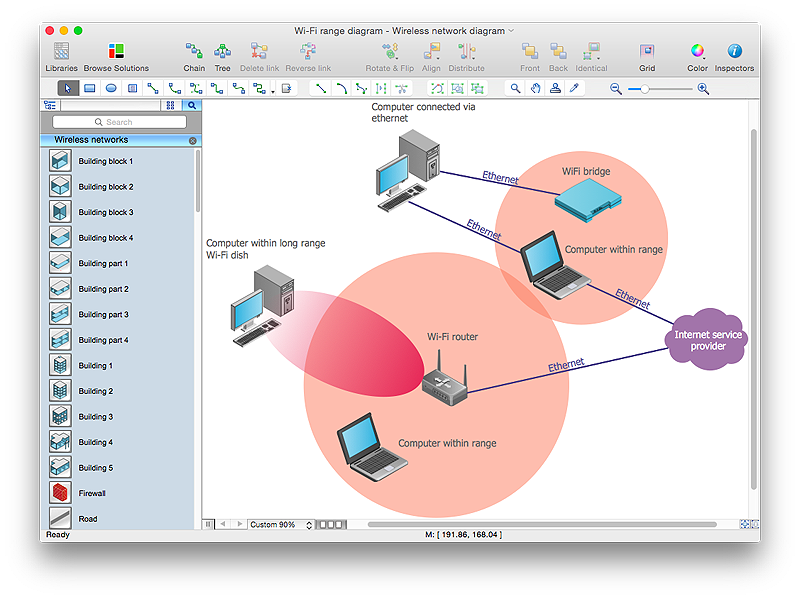 Wireless Networks
Wireless Networks
The Wireless Networks Solution extends ConceptDraw PRO software with professional diagramming tools, set of wireless network diagram templates and samples, comprehensive library of wireless communications and WLAN objects to help network engineers and designers efficiently design and create Wireless network diagrams that illustrate wireless networks of any speed and complexity, and help to identify all required equipment for construction and updating wireless networks, and calculating their costs.
HelpDesk
How to Create a Wireless Network Diagram
A wireless network diagram is a specialized type of computer network diagrams. Wireless Network diagrams are used to develop, operate and maintain the WLAN systems. Making a Wireless Network diagram involves many different elements that can be managed using ConceptDraw PRO. With ConceptDraw PRO you can easily create and communicate the Wireless Network diagram of any complexity.
 Computer Network Diagrams
Computer Network Diagrams
Computer Network Diagrams solution extends ConceptDraw PRO software with samples, templates and libraries of vector icons and objects of computer network devices and network components to help you create professional-looking Computer Network Diagrams, to plan simple home networks and complex computer network configurations for large buildings, to represent their schemes in a comprehensible graphical view, to document computer networks configurations, to depict the interactions between network's components, the used protocols and topologies, to represent physical and logical network structures, to compare visually different topologies and to depict their combinations, to represent in details the network structure with help of schemes, to study and analyze the network configurations, to communicate effectively to engineers, stakeholders and end-users, to track network working and troubleshoot, if necessary.
- An Example Of A Project Management Plan For A Wireless
- Network Diagram In Project Management Examples
- Secure Wireless Network | Quality Mind Map | Project Management ...
- Project Management Network Diagram Example
- Wireless Network Project Sample
- Wireless Network Project Proposal Sample
- Wireless Network Project Examples
- Draw Project Management Nodes
- Network Diagram Of Project Management Solutions
- Roaming wireless local area network diagram | Management Area ...
- Project Management Network Diagram
- Project Management Net Work Diagram Activity On Node
- Fishbone Diagram | Wireless Networks | Project Exchange | How To ...
- Network Diagram Examples Project Management
- Project Management Network Diagrams
- Example Network Diagram In Project Planning
- Project Network Diagrams
- Project Network Diagram Software
- UML Use Case Diagram Example Social Networking Sites Project ...
- Project Management Network Diagram Software Free
